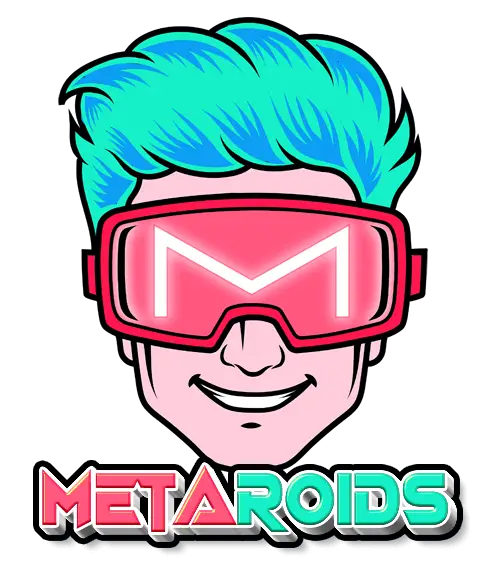Let’s face it, we’ve all been tricked by a fake video at least once in our lives. On the internet where cats play pianos, it can be hard to tell what’s real and what’s not. But these days, the stakes are even higher. With the advent of deepfakes, the line between fact and fiction is getting blurrier by the day. That’s why it’s more important now than ever to learn how to detect deepfakes.
Deepfake media can be detected through manual analysis for inconsistencies like unnatural facial movements or mismatched audio. The process can also be automated by relying on machine learning algorithms that can detect anomalies by comparing them to a database of known real or fake media.
Combining manual and automated methods can provide a more comprehensive and accurate approach to detecting deepfake media. Let’s explore some of the most effective techniques for flagging synthetic media.
How Can Deepfakes Be Detected?
As deepfake technology gets more sophisticated, detecting fake media is becoming a big challenge, especially to the uninitiated. Luckily, technology is also stepping up to the plate with some nifty automated methods.
Remote KYC is one of the largely reliable methods for verifying people’s identities using facial recognition. It is also handy for detecting deepfakes by comparing the faces in a video to a database of known images. Basically, if the face in the video doesn’t match what is in the database, it’s probably fake. This tech is already being used by some financial institutions to ID customers remotely.
Face recognition is another automated method for detecting deepfakes. It works by analyzing videos for any weird inconsistencies in the individual’s facial features, like irregular eye movement or wonky facial expressions. It might not be perfect, but it can also help companies offer protection from new account fraud using deepfakes.
Additionally, blockchain technology can be used to create a tamper-proof record of the creation and distribution of videos or images. By using blockchain technology, it is possible to verify the authenticity of a video or image.
There are also a bunch of different programs you can use to detect synthetic media like Deepware Scanner, Sensity, and Deepfake-o-Meter. They all use machine learning algorithms to scour the video data for any signs of manipulation.
For example, Deepware Scanner checks for odd skin textures or lighting inconsistencies. It also looks out for out-of-place head movements and blinking patterns.
Of course, automated methods aren’t perfect. Deepfake creators are always coming up with new ways to evade detection, so these tools might not always catch everything. That’s where manual methods come in handy.
How to Spot Deepfakes Manually
Automated methods might be great, but sometimes you need human intuition to catch the subtler signs of a deepfake media.
They involve scrutinizing the video for any telltale signs of fakeness, like awkward facial movements or pauses in between speech. While they’re a bit more time-consuming and sometimes less reliable, they can still be super helpful when combined with automated methods.
Whether you’re a journalist, fact-checker, or just a curious viewer, these tips can help you distinguish between real and deepfake media. Moreover, these methods serve as a counterbalance to the speedy rise of deepfake apps that expands the power of this controversial tech to millions of users.
Video Deepfakes
Spotting deepfake videos is all about looking for subtle signs that something isn’t quite right. For starters, pay close attention to the movement of the person in the video.
If they’re moving in a robotic way, or their eyes seem to be darting around unnaturally, it’s a red flag that the video has been manipulated. Up to date, even the most advanced AI can still struggle to replicate the natural nuances of human movement.
Another dead giveaway is audio inconsistency with the video and changes in camera angles. If the video suddenly shifts from bright sunlight to dark shadows, or the camera angle changes abruptly, it could be a sign that someone has stitched together multiple clips to create a deepfake.
Deepfake creators often use pre-existing footage for their videos, and as a result, they may struggle to match the lighting and angles of the original footage. Also, be on the lookout for any inconsistencies or glitches.
Lastly, watch out for signs of liveness such as head movements, smiles, and blinks. If the person in the video is standing stock still like a department store mannequin, or their facial expression doesn’t change at all, it’s a sign that you might be watching a synthetic video.
Image Deepfakes
Detecting a deepfake image can be more challenging compared to deepfake videos since there are no movements. When checking potential deepfake images keep an eye out for body proportions that look like they belong in a funhouse mirror, or facial expressions that make the subject look like they just wandered out of the uncanny valley.
If the subject in the image appears to have a disproportionately large head, for example, or limbs that seem unnaturally long or short, it’s a sign that the image might be fake. Another thing to watch for is unnatural facial features or expressions.
Look for things like mismatched eye size or shape, odd coloration around the mouth or nose, or an expression that just doesn’t quite look right. Pay close attention to posture as well. If the subject in the image seems to be standing or sitting in a strange position, it could be a sign that the image has been digitally generated.
Similarly, check for features that appear to be blurred out or obscured, especially in extremities like fingers or toes. Lastly, inspect for swirl-like patterns or a photo that looks too shiny and perfect around the edges to be real.

Audio Deepfakes
Identifying a deepfake audio would require more attention since you have to rely on your memory of the supposed speaker’s voice. One key giveaway is a robotic voice delivered in a flat tone.
Another clue to watch out for is the message passed with the audio. This can be requests or statements that seem out of character for the person speaking, or that don’t quite fit with the context of the audio. Pay attention to speech patterns and phrasing, and listen for any odd pauses or breaks that might indicate a splice or edit.
Finally, be sure to use your memory to your advantage, if you have access to other audio recordings of the same person, compare them to the audio you’re listening to and see if anything seems off.
Will Deepfake Be Detectable Forever?
While detection methods are constantly evolving, it is difficult to predict the future of deepfake technology and whether it will ever become completely undetectable, especially by manual means.
However, researchers and experts are working hard to stay ahead of the game and develop new tools and techniques to detect deepfakes as they become more enhanced. One promising way is through the use of advanced AI algorithms that can access media and identify patterns that might be invisible to the human eye.
Competition Heating Up in the Deepfake Detector Market
Companies across various industries are already investing in developing programs to detect and combat synthetic media. One company that is actively working on deepfake detection is Facebook.
In 2019, Facebook launched a deepfake detection challenge, inviting researchers to develop algorithms to detect such media. The company also released a dataset of manipulated videos to help researchers train their models.
Facebook’s approach to detecting deepfakes is based on analyzing features to uncover inconsistencies. The company also uses a technique called optical flow, which can detect small changes in pixels that can be indicative of manipulation.
Another company at the forefront of the synthetic media detection race is Truepic. Truepic’s platform uses light distortion to verify the authenticity of images and videos. The platform also uses a unique digital fingerprint to verify that the image or video has not been manipulated.
Truepic’s platform can be used in a wide range of industries, such as finance, media, and e-commerce, where the authenticity of images and videos is crucial. Evidently, as deepfake technology continues to evolve, it is likely that detection methods will become more discerning as well.
NFTs: Are They The Solution?
NFTs, or non-fungible tokens, have been touted as a possible solution for combatting deepfakes. One of the primary ways NFT security is ensured is through the use of blockchain technology.
NFTs can be created and managed using smart contracts, which allows for the automation of processes such as minting, buying, and selling NFTs. Smart contracts can also include rules that govern the transfer of ownership of an NFT, which adds an extra layer of security.
Now in relation to deepfakes, creating a unique, blockchain-backed digital asset, NFTs provide a way to verify the authenticity of digital media.
However, while NFTs have the potential to add an extra layer of security to certain types of digital media, they may not be the ultimate counter to deepfakes. For example, an NFT can provide verification for a digital artwork or collectible, but it does not necessarily protect against deepfakes in other types of media, such as videos or audio recordings.
Plus, the cost and complexity of implementing NFTs may not be practical for all use cases. It’s like using a flamethrower to kill a fly. Sure, it might get the job done, but it’s probably overkill.
Additionally, NFTs can only verify the authenticity of the original digital asset, and cannot prevent someone from creating a deepfake of that asset in the first place.
That being said, there are some potential use cases for NFTs in the fight against deepfakes. However, NFTs are not a catch-all solution to counter deepfakes.
What if Someone Creates a Deepfakes of Me?
If someone creates a deepfake of you, it can be distressing and potentially damaging to your reputation, especially if the deepfake is used for fraud or defamation. How you approach the issue would depend on your perceived severity of the matter.
The first step to take is to gather evidence of the deepfake and report it to the appropriate authorities, such as law enforcement or the admin of social media platforms. It is also important to inform your friends, family, and colleagues about the deepfake so they can be aware and not be deceived by it.
As a matter of urgency, seeing legal advice from a lawyer or crisis management PR firms can help mitigate the potential harm caused by the deepfake. The laws surrounding deepfakes differ from country to country.
In the US, some states have passed legislation criminalizing the creation and distribution of deepfakes without consent, while in the UK, deepfakes can fall under existing laws on defamation, fraud, and intellectual property infringement.
Moving forward, you can take steps to proactively protect your identity and prevent future deepfakes by limiting the amount of personal information you share online, using strong passwords, enabling two-factor authentication, and being cautious of phishing scams.
Staying Ahead of the Game
As technology evolves, so do the techniques of bad eggs looking to take advantage. But no need to panic, you can protect yourself by keeping your eyes peeled and staying skeptical of any content that seems too good (or bad) to be true.
Ultimately, it’s up to all of us to be vigilant consumers and critical thinkers by remaining wary of what we see and hear. Arming ourselves with the knowledge and tools necessary to detect deepfakes, we can continuously ensure that reality remains discernible from fabrication.
Related: Streamers Bring Deepfake YouTubers on Twitch For Next-level Entertainment
Join our newsletter as we build a community of AI and web3 pioneers.
The next 3-5 years is when new industry titans will emerge, and we want you to be one of them.
Benefits include:
- Receive updates on the most significant trends
- Receive crucial insights that will help you stay ahead in the tech world
- The chance to be part of our OG community, which will have exclusive membership perks



